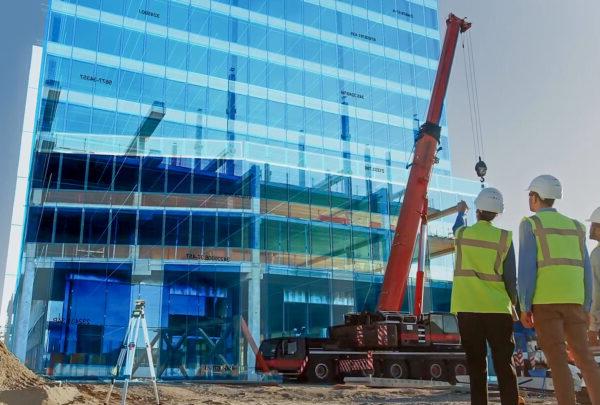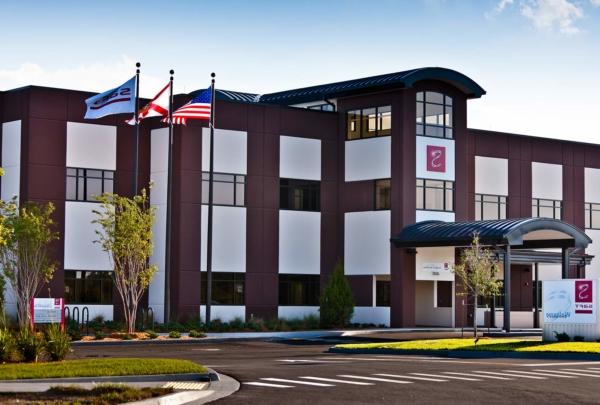The source of many complaints and a great risk for sanitation and safety, temperature and humidity (T&H) control in hospital facilities is often a struggle for the staff and occupants.
Many HVAC systems currently in use were designed and installed in the 1980s and ’90s or even earlier. Systems that were satisfactory then are often inadequate today, as they cannot keep up with current demands for temperature and humidity control. To improve comfort, temperature setpoints are lowered, but systems that cannot adequately dehumidify the air leave the humidity high, making the space feel 'sticky' and uncomfortable.
The relative humidity (RH) in a space should be controlled to promote proper skin evaporation and comfort for staff and patients, as well as limit the growth of pathogens such as bacteria, fungus, and mold. Consequently, there has been an increased demand for retrofitting older HVAC systems to meet current healthcare standards. Staying up to date with these advancements is crucial for healthcare facilities to maintain compliance and operational efficiency, contributing to better healthcare outcomes.
Several spaces are particularly critical regarding T&H:
- Operating Rooms (OR) and procedure spaces
- Pharmacies for drug mixing
- Sterile processing
These spaces have experienced code-and-operations-related reductions in space temperature in the last few years. Changes in the standards and requirements have also increased the burden on older and inadequately performing HVAC systems. Each of these critical spaces has T&H requirements listed in FGI/ASHRAE 170 as well as USP 797/800 for pharmacies and ANSI/AAMA ST79 for sterile processing.
The recent use of more personal protective equipment (PPE) by staff has added to the issues in these spaces.
Operating Rooms
The American Society of Heating and Air Conditioning Engineers (ASHRAE) standard 170 specifies a required range for T&H. However, the range includes a footnote indicating staff and/or certain types of procedures may require temperature and humidity outside the range, effectively saying, “There is no required temperature and humidity” in an OR. It is critical to understand the requirements of staff as well as requirements for any special types of procedures when designing and installing HVAC systems for this type of room. Many facilities allow lower temperatures as needed by doctors and staff, but humidity typically must stay in the 30-60% range. In many locations, high humidity is the main issue, but humidity that is too low can also cause problems. Some hospital medical products have low humidity ranges that may need to be considered, and humidity that is too low can also lead to pathogen growth and can impair our body’s immune response.
Pharmacies
Mixing pharmacies are required by USP 797/800 to be capable of space temperatures below 68°F, and the newest version of the standard, which has not been implemented at this time, also requires humidity to be less than 60%. The USP standard also uses the term “comfortable” or statements like “provide comfortable conditions for compounding personnel.” Comfort is a subjective term and cannot be measured absolutely from an engineering perspective, so during design it is important to define an absolute temperature and humidity range for these spaces that can be measured and controlled. Some facilities are choosing to hold at temperatures of 65°F or lower. This becomes an issue because at these temperatures typical chilled water systems cannot dehumidify the air below 60%. temperatures of 65°F or lower.
Many of these pharmacies are in outpatient clinics that do not have chilled water systems, causing other HVAC system challenges. Direct expansion refrigerant (DX) packaged units can be designed for these applications, but they must provide constant temperature air during all seasons and ambient conditions. DX split systems of this type are even more difficult to design and install and most system manufacturers will not recommend their split system equipment for these low-temperature applications.
Sterile Processing
Sterile processing (SP) areas are another potential source of temperature and humidity issues. ASHRAE 170-2017 sets the temperature range for clean workrooms in the SP area as 68-72°F with a max RH of 60%. If these spaces are designed for 68°F, keeping the RH below 60% may be an issue. Decontamination (decon) rooms associated with SP have a temperature range of 60-73°F with no requirement for humidity. This is no issue since there is no upper limit to humidity listed. Many facilities, however, set a maximum on RH of 60%. If this is the case, maintaining 60°F at less than 60% RH is well beyond the capability of most standard chilled water or DX HVAC systems. For example, a system designed to keep buildings at 72°F and 50% RH used to cool a SP decon room to 60°F would result in a space RH of over 75%.
In most regions of the U.S. with high humidity, outside air (OA) is the major source of concern.
There are several methods of dealing with OA, including desiccant dehumidifiers, infection isolation chambers and low-temperature chillers or cooling systems. Desiccant systems can achieve incredibly low humidity but can be counterintuitive in their operation and more complex to maintain. Low-temperature chilled water can have a penalty of reheating requirements but are often simpler and can be arranged to provide cooling back-up in case of main chiller plant shutdowns. The installed cost and operating cost of equipment providing low temperature and humidity can be more than standard HVAC systems, so owners need to be prepared for these increased costs. The use of energy recovery systems can help reduce some of the operating costs, but typically require more complex systems and increased first cost. Since OA is the source of most humidity issues and considering the effectiveness of current filtration in hospitals, OA should be minimized to as close to ventilation minimums as possible to limit the energy needed for dehumidification.
The key to dealing with temperature and humidity issues both in existing spaces and as part of new space design is to engage a knowledgeable HVAC engineer early in the process to help evaluate existing systems and the desired results to ensure the two are aligned.
澳门足彩app’s Healthcare advisers provide an invaluable resource for health systems striving to keep pace with current standards and provide the highest quality care for their patients. Contact us to discuss solutions.







































































































